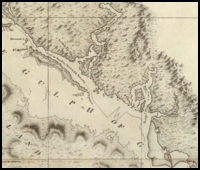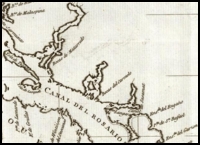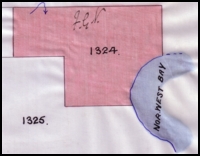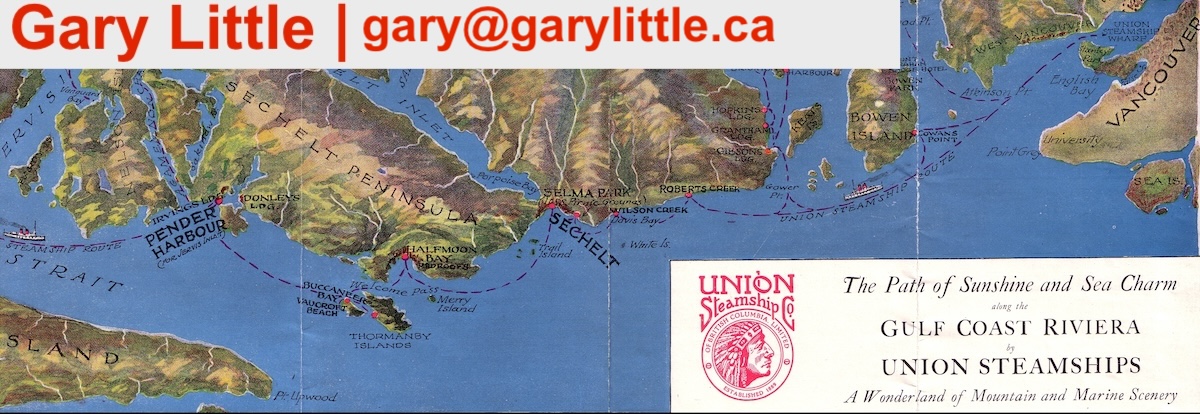 Home Home
Featured Properties
Property For Sale (Map)
Property For Sale (List)
Real Estate Statistics
Buying Tips
Selling Tips
About the Sunshine Coast
Sunshine Coast Links
News Releases
Testimonials
About Me
Contact Me

1791 Narváez chart

1792 Vancouver chart

1792 Galiano chart

1892 Sargeant Bay survey
|
|
About the Sunshine Coast
Exploration & Early Settlement
Town Profiles
Things To Do
Population & Demographics
In 2009 I helped the District of Sechelt create three markers relating to the early exploration and development of the Sunshine Coast (see the news release here). A fourth sign was put up in July 2011.
- José María Narváez: First European Explorer of the Sunshine Coast
Location: South end of the Davis Bay Seawall
Click here to see an article I've written on this subject.
Click here to see a photograph of me with maritime artist Steve Mayo at the sign on September 4, 2010; Steve's painting of Narváez's ship the Santa Saturnina appears on the sign.
Click here to see the sign.
- Early Explorers of the Sunshine Coast
Location: North end of the Davis Bay Seawall
- The Union Steamship Era: Opening Up the Sunshine Coast
Location: Trail Bay esplanade at the foot of Trail Avenue
- Capt. George Henry Richards: 1860 Sunshine Coast Survey
Location: Davis Bay Seawall near Westly Road
Exploration & Early Settlement
The first European visitors to the area we now call the Sunshine Coast did not arrive until the 1790s when three maritime expeditions, two from Spain and one from England, explored the area:
-
José María Narváez — 1791.
At the age of only 23, Narváez of Spain led the first European excursion into the central part of what is now called Georgia Strait. Although not as well known as the three great explorers who arrived one year later, Narváez has the distinction of being the first European to cruise along the Sunshine Coast, on July 10-12, 1791. He was also the first to set foot on solid ground after anchoring off Mission Point near the mouth of Chapman Creek (he named it Rio de la Aguada — River of the Watering Place) so that he could replenish his fresh water barrels at the banks of the river. This is the first recorded landing of an explorer on the southwestern mainland coast of what is now British Columbia. For more information, see my article José María Narváez: European Discoverer of the Sunshine Coast at http://www.GaryLittle.ca/maps-historic/narvaez.html.
-
George Vancouver — 1792.
Vancouver was a master navigator and cartographer and his charts covering the length of the largely unknown northwest coast from Puget Sound, Washington to Anchorage, Alaska are legendary for their detail and accuracy. On the evening of June 15, 1792 he camped at what was probably Gibsons harbour and the next day his longboat proceeded along the Sunshine Coast through Welcome Pass opposite Halfmoon Bay. He noted in his log that "This part of the coast is of a moderate height for some distance inland, and it frequently jets out into low sandy projecting points. The country in general produces forest trees in great abundance, of some variety and magnitude; the pine is the most common, and the woods are little encumbered with bushes or trees of inferior growth." For more information, see my article George Vancouver Visits the Sunshine Coast: 1792 as well as my interactive map showing his exploration of the Sunshine Coast area in June 1792 at http://www.GaryLittle.ca/maps-historic/van250.html.
-
Dionisio Alcalá Galiano & Cayetano Valdés — 1792.
The Spaniards Galiano & Valdés, officers in the Alejandro Malaspina scientific expedition, were ordered to continue exploring the area Narváez had visited the previous year. They left Nootka in May of 1792 in two new 46-foot schooners built in Mexico — the Sutil and Mexicana — and returned four months later, becoming the first explorers to circumnavigate Vancouver Island in the process. In what must have been quite a surprise, just as they entered Georgia Strait, they discovered George Vancouver's two ships anchored in Birch Bay just south of the 49th parallel. The two expeditions eventually sailed north together along the Sunshine Coast, worked cooperatively to chart Desolation Sound (north of Powell River), then decided to go their separate ways. It would be almost 70 years before the Sunshine Coast was examined again by another surveying team. For more information, see my article Dionisio Alcalá Galiano: 250th Anniversary of Spanish Explorer's Birth at http://www.GaryLittle.ca/maps-historic/galiano.html.
Permanent settlement of the Sunshine Coast by Europeans did not occur for almost another century when, between 1875 and 1890, prime land was pre-empted in the areas of present day Gibsons [George Gibson, George Gibson, Jr, George Glassford: 1887], Roberts Creek [Will Roberts, William Campbell, James Mitchell: 1889], Davis Bay [William Simpson, Beecher Hungerford: 1888], Sechelt [John Scales: 1875 and Joseph Bouillon: 1889], and Sargeant Bay [Frederick Sargent: 1887]. In the 1890s, more pre-exemptions were made further north in Halfmoon Bay and Pender Harbour. These pioneering settlers were primarily adventuresome loggers, farmers, and fishermen.
Town Profiles
Gibsons. Located close to the ferry terminal in Langdale, this is the town most people explore the first time they visit the Sunshine Coast. It features spectacular views of water and islands, and of the Sea-to-Sky mountains across Howe Sound. The older part of town, near the harbour and wharf, is a tourism centre that becomes very busy in the summer. Gibsons achieved lasting fame as the home of The Beachcombers television show which ran for 18 seasons (1972-1990) on CBC TV. This show helped bring the natural beauty of the Sunshine Coast to millions of people around the world. Gibsons is the winner of the prestigious 2009 LivCom award for most liveable community in the world with a population below 20,000.
Roberts Creek. This small community is known for the resolution of many of its residents — the so-called Gumboot Nation — to adopt healthy, organic lifestyles and to respect and protect the environment. It has become an increasingly popular spot to live since it is a quiet area conveniently located half way between the Gibsons and Sechelt business centres. The Sunshine Coast Golf & Country Club is located here.
Sechelt. Sechelt is the largest town on the Sunshine Coast with over 8,000 residents and is the primary business centre. It is known as the land between two waters because the central village occupies a narrow isthmus that separates the open water of Georgia Strait from Sechelt Inlet to the north. The municipal district is quite large and includes the neighbourhoods known as Wilson Creek, Davis Bay, Selma Park, East Porpoise Bay, Sandy Hook, Tuwanek, West Porpoise Bay, and West Sechelt. Sechelt has an airport (in Wilson Creek) and a seaplane harbour (on Porpoise Bay). For information on parks in the Sechelt area, go to the District of Sechelt's Parks, Playgrounds, Streetscapes & Green Spaces page.
Halfmoon Bay. This is a tranquil community located just northwest of Sechelt. People have been coming to Halfmoon Bay for almost a century to escape city life and enjoy the great outdoors. The original Redrooffs Resort which attracted many early visitors is long gone, but the kayaking, boating, and hiking opportunities remain — as does the Redrooffs name which now identifies the road that meanders along the picturesque Halfmoon Bay coastline below the main highway. Halfmoon Bay includes two major parks that are worth visiting: Sargeant Bay Provincial Park and Smuggler Cove Marine Provincial Park. For a summary of all parks in the area, see my Halfmoon Bay Parks page at http://www.GaryLittle.ca/parks-hmb.html. For a summary of special events, see my Halfmoon Bay Special Events page at http://www.GaryLittle.ca/hmb-events.html.
Pender Harbour. This boater's paradise is known as the Venice of the North for its large collection of interconnected bays, coves, and islands. People come here to fish, scuba dive, sail, or to simply enjoy the great scenery. Pender Harbour is surrounded by several small communities, notably Madeira Park (the business centre), Garden Bay, and historic Irvines Landing. A little farther north is the ferry terminal at Earls Cove (the ferry here takes you to the Powell River area), the small community of Egmont, and the Skookumchuck Rapids.
Things To Do
Population and Demographics
The BC Government socio-economic profile for the Sunshine Coast Regional District summarizes population estimates, age distribution information, personal taxation statistics, and labour force by industry for the Sunshine Coast.
The population of the entire Sunshine Coast area, according to the 2016 Canadian census, is 29,970, an increase of 4.7% since the 2011 census. The populations of the two largest towns, Sechelt and Gibsons, are 10,216 and 4,605, respectively. The populations of the rural unincorporated areas are:
- Pender Harbour & Egmont (Area A) — 2,624
- Halfmoon Bay (Area B) — 450
- Roberts Creek (Area D) — 1,867
- Elphinstone (Area E) — 3,664
- West Howe Sound (Area F) — 2,043
|

